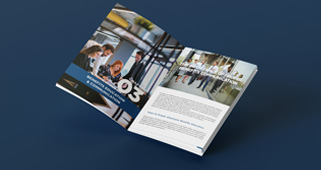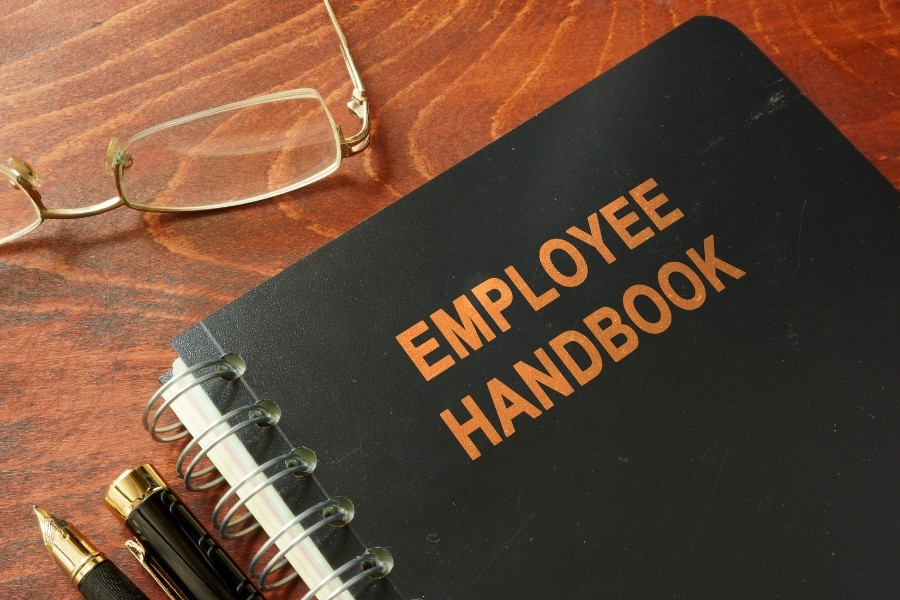In today’s rapidly evolving workplace, an up-to-date employer handbook is more crucial than ever. It serves as a foundational document that outlines your company’s policies, procedures, and expectations, helping to ensure legal compliance, consistency, and clarity. As workplace dynamics change and new trends emerge, it’s important to keep your handbook current and relevant. This blog explores the latest updates and essential inclusions that should be considered for an employer handbook in 2024.
1. Remote Work and Hybrid Work Policies
The shift towards remote and hybrid work has transformed how businesses operate. An effective employer handbook should reflect these changes with clear guidelines and policies:
- Remote Work Eligibility and Expectations: Define which roles are eligible for remote work and outline expectations for remote employees. Include details on work hours, communication protocols, and performance standards.
- Home Office Setup: Provide guidance on home office requirements, including ergonomics, equipment, and internet connectivity. Specify what expenses the company will cover and how employees should request reimbursements.
- Data Security: Outline procedures for maintaining data security while working remotely. Include requirements for using company-provided security software, secure VPN connections, and handling sensitive information.
- Hybrid Work Arrangement: For companies adopting a hybrid model, clarify how employees should divide their time between the office and remote work. Address scheduling, office space reservations, and health and safety protocols.
2. Mental Health and Well-being Support
The focus on employee mental health and well-being has intensified, and your handbook should reflect this priority:
- Mental Health Resources: Include information on available mental health resources, such as Employee Assistance Programs (EAPs), counseling services, and mental health days. Ensure employees know how to access these resources confidentially.
- Work-Life Balance: Outline company policies on work-life balance, such as flexible work hours, leave policies, and support for managing stress. Encourage managers to promote a culture that values well-being.
- Anti-Burnout Measures: Implement policies to prevent burnout, including guidelines for taking breaks, managing workloads, and encouraging employees to take their allotted time off.
3. Diversity, Equity, and Inclusion (DEI)
As organizations strive to create more inclusive workplaces, your handbook should include comprehensive DEI policies:
- DEI Statement: Articulate your company’s commitment to diversity, equity, and inclusion. Include your goals and the steps you are taking to promote a diverse and inclusive work environment.
- Anti-Discrimination and Harassment Policies: Update your anti-discrimination and harassment policies to include specific examples and procedures for reporting incidents. Ensure that your policies comply with current laws and best practices.
- Accommodation Procedures: Provide information on how employees can request accommodations for disabilities or religious practices. Detail the process for evaluating and providing reasonable accommodations.
- Training and Education: Specify any DEI training programs or educational opportunities available to employees. Encourage ongoing learning and development in these areas.
4. Social Media and Online Conduct
With the rise of social media and online communication, it’s important to establish clear guidelines on how employees should conduct themselves online:
- Social Media Use: Outline acceptable use of social media, including guidelines for posting about the company, interacting with clients, and maintaining professionalism online. Address how employees should handle potential conflicts of interest.
- Online Behavior: Provide guidelines on online behavior that reflects the company’s values and expectations. Address issues such as cyberbullying, inappropriate content, and online harassment.
- Confidentiality and Privacy: Emphasize the importance of maintaining confidentiality and privacy regarding company information. Outline what employees should and should not share online.
5. Flexible Work Arrangements
The trend towards flexible work arrangements has gained momentum. Your handbook should address:
- Flexible Scheduling: Detail the company’s policies on flexible work hours, including options for compressed workweeks, staggered hours, and job-sharing arrangements.
- Paid Time Off (PTO) Policies: Review and update your PTO policies to reflect current practices. Consider offering additional types of leave, such as paid parental leave, volunteer leave, or paid sick days.
- Leave of Absence: Outline procedures for requesting and managing various types of leave, including medical leave, family leave, and personal leave. Clarify the process for returning to work and any documentation required.
6. Employee Rights and Legal Compliance
Keeping your handbook up-to-date with legal requirements is essential to ensure compliance and protect your organization:
- Legal Updates: Regularly review and update your handbook to reflect changes in labor laws, workplace regulations, and industry standards. This includes federal, state, and local laws.
- Whistleblower Protections: Include information on how employees can report unethical or illegal activities within the company. Detail the process for handling reports and protecting whistleblowers from retaliation.
- Health and Safety: Update your health and safety policies to comply with current regulations and best practices. This includes workplace safety protocols, emergency procedures, and guidelines for reporting safety concerns.
7. Technology and Data Privacy
As technology becomes increasingly integrated into the workplace, it’s important to address:
- Acceptable Use of Technology: Define policies on the use of company technology, including computers, mobile devices, and software. Outline acceptable use, security measures, and consequences for misuse.
- Data Privacy: Provide guidelines on handling sensitive information, both company and personal. Include protocols for protecting data privacy and managing cybersecurity risks.
- Remote Access: Address policies for remote access to company systems and data. Include guidelines for securing personal devices used for work and ensuring compliance with data protection regulations.
8. Compensation and Benefits
Ensure that your handbook includes clear and comprehensive information on compensation and benefits:
- Salary Structure: Outline how salaries are determined, including factors such as experience, performance, and market rates. Address how salary reviews and adjustments are handled.
- Benefits Overview: Provide detailed information on the benefits offered, including health insurance, retirement plans, and other perks. Include eligibility criteria, enrollment procedures, and contact information for benefits inquiries.
- Expense Reimbursement: Detail the procedures for reimbursing work-related expenses, including what types of expenses are eligible, the documentation required, and the reimbursement process.
9. Employee Development and Training
Fostering employee growth and development is essential for a successful workplace:
- Training and Development: Outline opportunities for professional development, including training programs, workshops, and educational assistance. Encourage employees to pursue continuous learning and skill development.
- Performance Reviews: Provide information on the performance review process, including how evaluations are conducted, the criteria used, and how feedback is provided. Include details on goal-setting and career advancement opportunities.
- Mentorship Programs: If applicable, describe any mentorship or coaching programs available to employees. Highlight how these programs can support career growth and development.
10. Emergency Procedures and Crisis Management
An updated handbook should include clear guidelines for handling emergencies and crises:
- Emergency Contacts: Provide a list of emergency contacts, including internal and external resources such as emergency services and crisis management teams.
- Emergency Procedures: Detail procedures for various types of emergencies, including natural disasters, workplace accidents, and medical emergencies. Include evacuation plans, first aid protocols, and communication procedures.
- Crisis Management: Outline the company’s approach to managing crises, including how to handle media inquiries, communicate with stakeholders, and support employees during a crisis.
Conclusion
An employer handbook is a critical tool for establishing clear expectations, promoting consistency, and ensuring legal compliance in the workplace. As the work environment continues to evolve, it’s important to keep your handbook current with the latest trends and best practices. By addressing key areas such as remote work, mental health support, DEI, social media conduct, and flexible work arrangements, you can create a handbook that supports your organization’s goals and meets the needs of your employees. Regularly reviewing and updating your handbook will help ensure that it remains a valuable resource for your organization.






